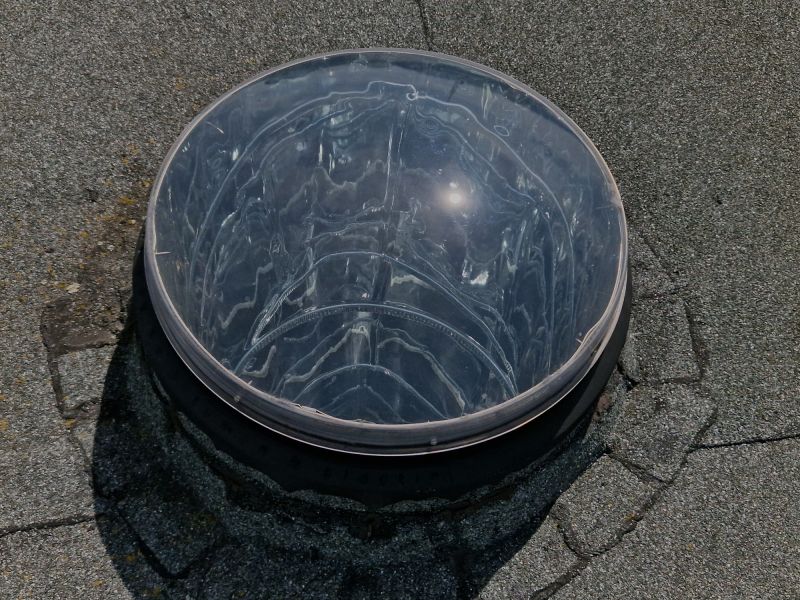Favorite Products for Light Tunnel Installation Projects
Get insights into the essential products favored by industry experts for successful light tunnel projects.
 Light tunnel installations are specialized structures used to direct, diffuse, or control natural and artificial light within various environments. These installations are often employed in horticultural settings, architectural designs, art installations, and scientific research facilities. The core purpose of a light tunnel is to optimize light distribution, minimize light loss, and create controlled lighting conditions that enhance growth, visibility, or aesthetic appeal.
Light tunnel installations are specialized structures used to direct, diffuse, or control natural and artificial light within various environments. These installations are often employed in horticultural settings, architectural designs, art installations, and scientific research facilities. The core purpose of a light tunnel is to optimize light distribution, minimize light loss, and create controlled lighting conditions that enhance growth, visibility, or aesthetic appeal.
Top Overall Option
Modular Light Tunnel System
A versatile modular light tunnel system offers customizable configurations with durable reflective panels, adjustable diffusers, and seamless sealing options. Designed for ease of assembly and maintenance, it provides a flexible solution suitable for various applications including horticulture, research, and architectural projects.
Types of Products For Light Tunnel Installations
Reflective Panel Sections
High-quality reflective panels help maximize light efficiency within the tunnel, available in various sizes and materials to suit different project scales.
Light Diffusers
Diffusers distribute light evenly, reducing hotspots and glare, and are available in different materials for specific light quality needs.
Sealing Gaskets and Seals
Sealing components prevent light leaks and protect against environmental factors, ensuring consistent performance.
Structural Support Frames
Robust frames provide stability and support for the entire tunnel system, adaptable to various lengths and shapes.
Adjustable Ventilation Panels
Ventilation panels help regulate temperature and humidity within the tunnel, crucial for controlled environments.
Light Filtering Films
Films that can be applied to modify light intensity or spectrum, suitable for fine-tuning environmental conditions.
Mounting Brackets and Clips
Secure components and facilitate easy assembly with various mounting options compatible with different structures.
Portable Tunnel Kits
Pre-fabricated kits designed for quick setup and portability, ideal for temporary or mobile installations.
Lighting Control Systems
Integrated systems that allow precise control over light intensity, duration, and spectrum within the tunnel.
Weatherproof Coverings
Protective coverings to shield the tunnel from weather elements, extending durability and lifespan.
Lighting Mounts and Supports
Supports for external or internal lighting fixtures to enhance or supplement natural light sources.
Sensor and Automation Components
Sensors for light, temperature, and humidity that enable automated adjustments for optimal conditions.
Reflective Coatings
Specialized coatings applied to internal surfaces to improve reflectivity and light distribution.
Seamless Connection Joints
Components that facilitate smooth and secure connections between tunnel segments for a continuous light path.
Light Spectrum Modulators
Devices that adjust the spectrum of light entering the tunnel, useful for specific plant growth or artistic effects.
Popular Choices
Widely used for their ease of installation and ability to evenly distribute light in various tunnel setups.
Popular for their customizable angles and high reflectivity, aiding in optimizing light distribution.
Favored for their convenience and quick setup, suitable for temporary or mobile projects.
Commonly chosen for ensuring light integrity and environmental protection in various installations.
Preferred for outdoor applications to safeguard the tunnel from weather exposure.
Frequently used to attach supplemental lighting fixtures for enhanced control.
Popular for automating light adjustments based on environmental readings.
Often selected to improve internal light reflection and distribution efficiency.
Commonly used to create continuous tunnel structures with minimal light leaks.
Chosen for their ability to modify the light spectrum for specific applications.
Popular for maintaining optimal internal conditions in larger or outdoor tunnels.
Widely used for their durability and adaptability to different tunnel sizes.
Constructing an effective light tunnel requires careful selection of materials and components to ensure durability and functionality. Typical components include reflective surfaces, light diffusers, structural supports, and sealing elements to prevent light leaks. Modern light tunnels may incorporate adjustable features such as movable panels or variable light filters to adapt to changing conditions or specific project needs.
When choosing products for light tunnel installations, it is important to consider compatibility with existing infrastructure, ease of assembly, and maintenance requirements. The materials used should withstand environmental factors like moisture, temperature fluctuations, and UV exposure, especially if the installation is outdoors or in humid environments. Proper insulation and sealing are also crucial to maintain consistent light levels and prevent unwanted light escape.
Overall, the success of a light tunnel installation depends on selecting the right combination of components that align with the specific goals of the project. From small-scale experimental setups to large industrial systems, the range of available products allows for customization and scalability. Investing in quality parts can lead to more reliable performance and longer service life, making it a worthwhile consideration for professionals and enthusiasts alike.
Key Buying Considerations
- Material durability and resistance to environmental factors
- Compatibility with existing structures and sizes
- Ease of assembly and installation procedures
- Adjustability features for customization
- Sealing quality to prevent light leaks
- Reflectivity and light diffusion efficiency
- Maintenance requirements and accessibility
- Weatherproofing options for outdoor use
- Compatibility with lighting control systems
- Flexibility for future modifications or expansions
- Cost-effectiveness relative to project scope
- Availability of replacement parts and support
- Internal versus external light management features
- Size and scalability options for different project needs
- Safety features and compliance with standards
